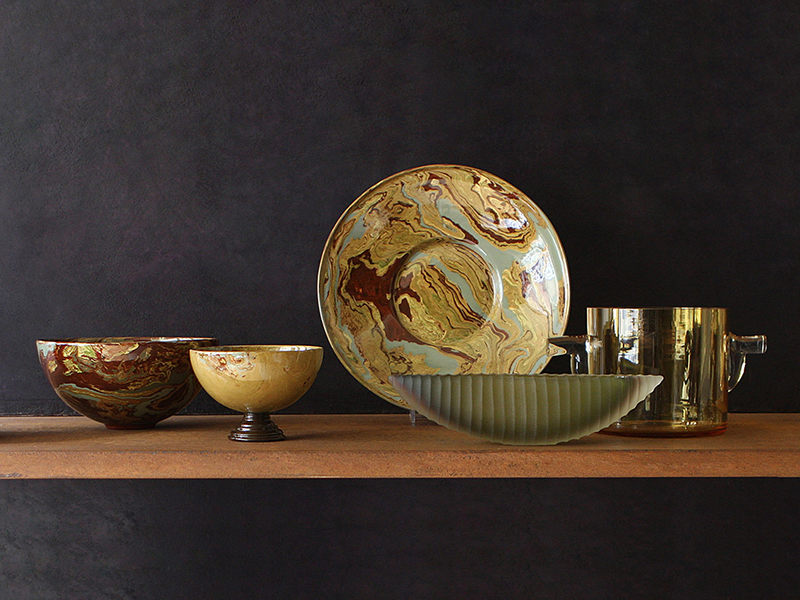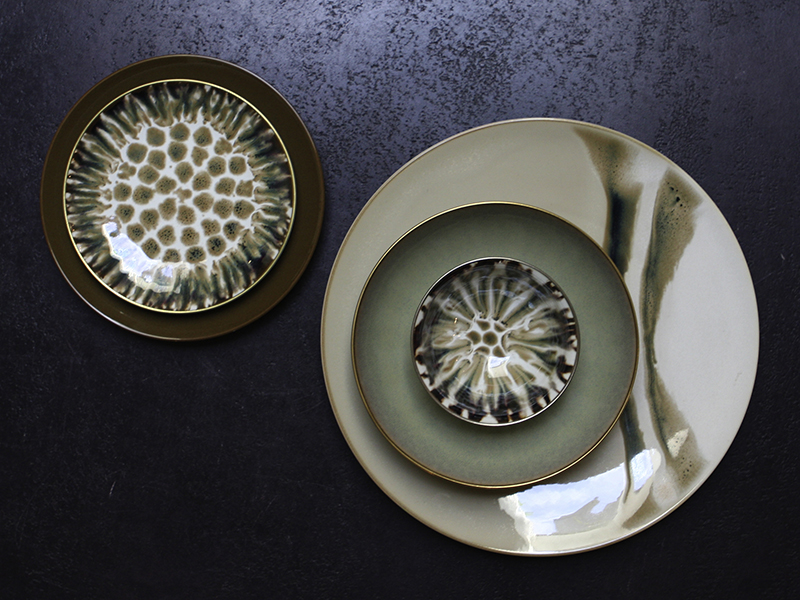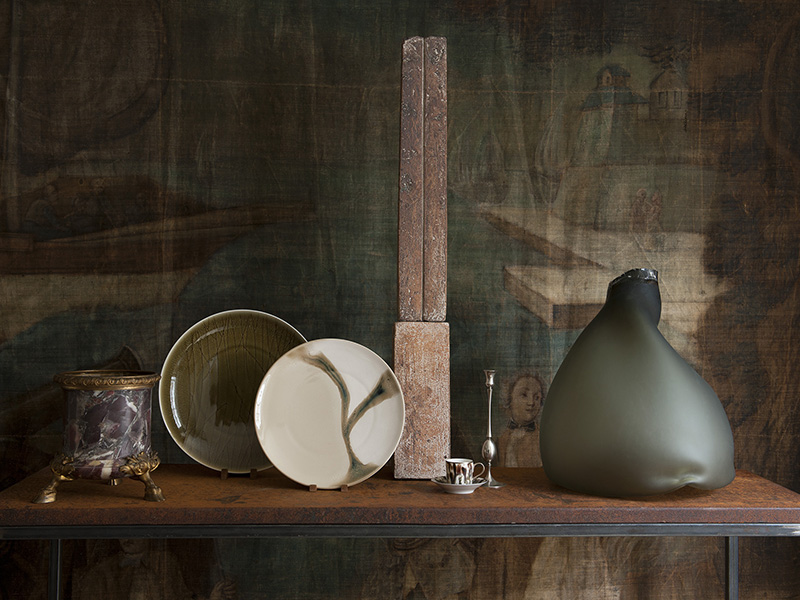An Art Gallery Owner’s Guide to Staging the Perfect Dinner Party
Rebecca Willer, owner of the eponymous London art gallery, on why tableware matters, and how to ensure your holiday gatherings are artful affairs
Rebecca Willer, owner of the eponymous London art gallery, on why tableware matters, and how to ensure your holiday gatherings are artful affairs
Formerly a lawyer who pursued creative endeavors in her spare time, Rebecca Willer opened her London art gallery in 2004 to display a selection of things she loved—furniture, textiles, design objects, and tableware. Today, the back of the room is lined with shelves that house an ever-changing selection from makers around the globe, and from there, Willer helps her clients to curate their collections, encouraging them to mix and match shapes, sizes, glazes, and colors to create totally unique table settings.

For years, while practicing as a lawyer in the City, I was doing my own projects on the side.
My Holland Park gallery evolved out of a lifelong personal involvement with design and objects, from ancient to contemporary named and signed pieces to the anonymous achievements of artists and craftsmen, whatever the era. While practicing in the City, I was the ‘sourcer’s sourcer’ to a small group of like-minded architect and designer friends. I became dissatisfied with having very limited time to pursue my creative side, and eventually summoned up the courage to abandon my law career in favor of exploring this passion for a wider audience, via the gallery.

Our tableware is displayed in cupboards that line one long wall.
Clients can choose from hundreds of samples of exceptional glazes and color palettes on a range of tableware, including Limoges porcelain and specially created stoneware. The doors are left open and clients are encouraged to take pieces out and explore the possible combinations that can be achieved. The process is a creative one, enabling clients to effectively ‘paint with plates.’ Working collaboratively, we put the elements together and arrive at the unique combination of glazes, colors, and patterns that will create the client’s unique selection. Good design combined with well-crafted making will always stand out and mix with other pieces of a similar quality, whatever their origin or age. Such pieces, be they objects or tableware, invariably sit well together, and enhance each other and their surroundings. We also offer an edited range of cutlery and stemware to complete all elements of the table settings.

Tableware is vital because it is the backdrop and setting for what will be the focus—the food.
But the relationship is symbiotic. The tableware sets the stage, dramatically or quietly. We see it before the food arrives and after the meal is over, and respond to its color, texture, and sense of occasion. It does not have to shout—it can be subtly perfect by virtue of its fineness or appropriateness for the meal, whether that’s a simple breakfast, a summer lunch outdoors, or a grand dinner. But the quality is always discernible.
It’s all about what mood you want to create. Use colors that you respond to rather than the seasonal standards. Rules are made to be broken…
The ‘handle’ of beautifully made tableware speaks for itself.
It feels different and special, even if it is part of an everyday set, elevating every meal. It gives pleasure in itself, and it enhances the whole experience of eating—from a piece of toast to a soufflé. In our experience, the most discerning professional chefs are likely to be involved in the selection of the tableware used to plate their food. They consider the relationship between their creations and the tableware on which it is served to be very important, and I believe that this practice also applies in the home.

Having wonderful tableware may be very low on most people’s list of priorities.
But once people realize the creative possibilities when selecting it, and the transformational properties when using it, there is no turning back. At Rebecca Willer, our starting point is always understanding how the client will use the dishes: understanding the location and style of the property, yacht, or plane; formal plated dinners, family-style meals, or informal buffet gatherings, for example—we’re getting to know what a client likes and dislikes. Some love a matt finish, others may be averse to certain materials, and some may wish to incorporate existing elements, for example, a particular color or even a family crest.

When hosting a dinner party, as well as the tableware, give thought to the comfort and ease of the setting.
Enable everyone to feel relaxed with unfussy food that is robust and abundant—I prefer serving an unending quantity of a few very well selected dishes. A dinner party menu need not mimic one from a restaurant. When choosing guests, avoid a too-obvious or forced selection. I find rather random combinations of people I want to see often work best. It’s best not to overthink who will get on with whom, which can often lead to a rather dull evening.

For larger events such as Thanksgiving or the holidays, I’d always say to keep it simple.
It’s all in the planning. Take a clear decision on a fixed menu with the right number of elements, and stick to it. This also helps greatly with knowing precisely how to set the table, and which dishes, serving pieces, and stemware to use. When dressing a table, I avoid using plain white dishes. Mismatched dishes and glasses often make for a more interesting look, and if that is too much, then try not using the same pattern of dishes for each of the courses. Think of the color of the food that will go on to the plate, then consider the cloth and the flowers, if there are any. These elements should all speak to each other, but that does not mean they have to match. I really don’t think there are any rules.